Potential still out of reach for aviation enterprises
According to the Airports Corporation of Vietnam (ACV), 2019 marked an impressive development of the aviation market when the total of passengers reached 116 million, an increase of 12 per cent compared to 2018.
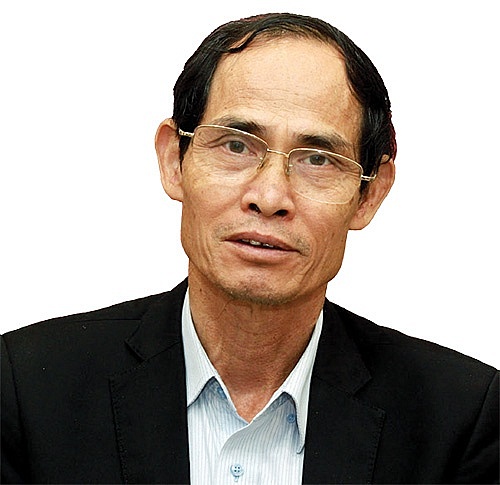 |
| Bui Doan Ne, Deputy chairman Vietnam Aviation Business Association |
Up ahead, it is expected that the total designed capacity of airports managed and operated by ACV by 2025 will be 168 million passengers a year, and 2.5 million tonnes of cargo per year. The 2030 figures are projected to be 296 million passengers a year and 3.5 million tonnes of cargo a year. Currently, the designed capacity of Vietnam’s airports is about 100 million passengers per year.
Under the airport development planning towards 2030, the airport network is expected to include 14 international airports and 17 domestic airports. Infrastructure investment and air transport require large capital sources, while capital from state-owned enterprises and the state budget is limited, meeting just 65.8 per cent of the total, mainly focusing on infrastructure funding.
The investment capital for airport infrastructure in 2021-2030 is estimated to be $17.5 billion. Meanwhile, ACV has only balanced about $11.52 billion, and the Ministry of Transport can handle about $427.8 million. A further $5.5 billion will therefore need to be mobilised from other sources.
Foreign investors have been involved in the service business from an early stage, in areas such as catering, goods, and passenger transportation. Since the 1990s, there have been foreign-invested enterprises participating in joint ventures that deal with meal processing and warehouse construction at Tan Son Nhat International Airport. These are fields that bring efficiency, as well as help domestic enterprises develop in both size and depth.
New investment laws and guiding decrees have also made many adjustments to create more favourable conditions for foreign investors, including in air transport and removing barriers for investors to participate in other areas of aviation business. Recently, there have been a number of financial backers registering to pour money into a number of airlines, including Vietnam’s national airlines companies.
Unleashing the potential
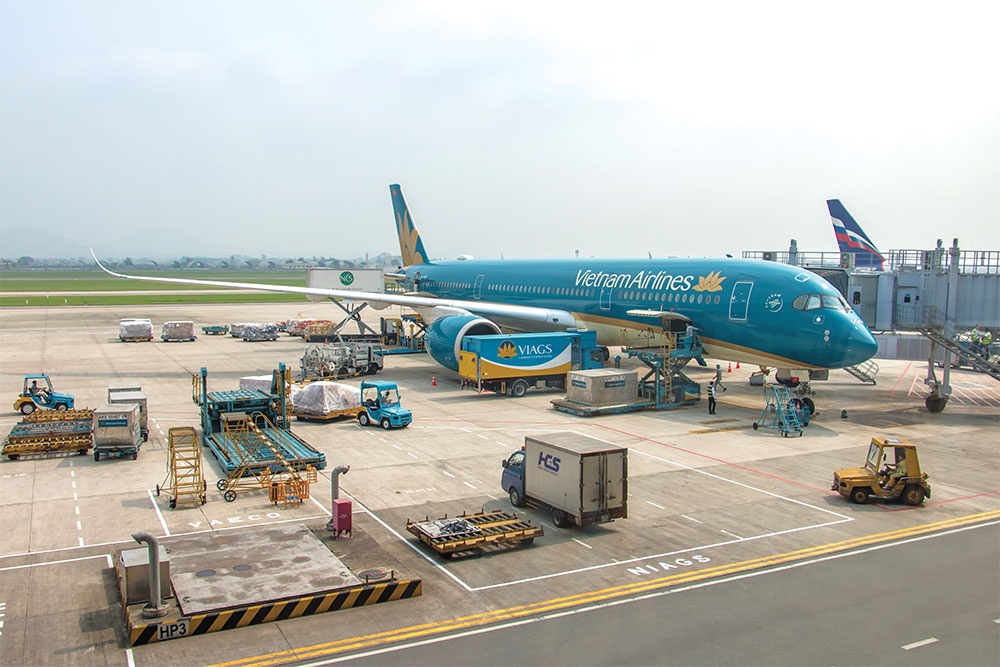 |
| Potential still out of reach for aviation enterprises, Photo Le Toan |
Foreign investment in the aviation sector has not yet met expectations due to a number of reasons. Funding in the sector requires large capital with a long investment return period, while efficiency is lower than many other sectors. Therefore, both domestic and foreign investors are quite cautious.
The regulations on conditional business lines and high risks of business activities in the aviation sector, especially the serious decline due to the pandemic, are other barriers hindering domestic and foreign private inflows into the sector.
According to current regulations, the rate of capital contribution in air transport enterprises for foreign investors is 34 per cent. This is a limiting factor when they want to increase the rate of capital contribution to realise long-term business goals.
The rate of capital contribution of foreign enterprises in the aviation sector and general air transport is one of the issues of concern over the past years. In 2007, it was stipulated that foreign-invested enterprises were not allowed to account for more than 49 per cent of charter capital in airlines and general aviation businesses; and a foreign individual or entity cannot account for more than 30 per cent of the charter capital.
At the time, this policy was said to be quite open. Australia’s Qantas Group in 2007 poured $50 million to buy 30 per cent of capital at Jetstar Pacific. In the race with Southeast Asia’s largest low-cost airline AirAsia, Qantas became the first foreign investor to contribute capital to a Vietnamese airline.
AirAsia, after that failure, persisted in looking for partners to establish a new airline in Vietnam. It chose Vietnam Shipbuilding Industry Group (Vinashin), with the two sides reaching an agreement – AirAsia agreed to cover flights and contribute 30 per cent of capital, while Vinashin covered procedures and permits. However, AirAsia’s plan once again collapsed, also because of rules surrounding capital contributions of foreign investors in the establishment of a domestic airline.
In 2013, the rate of capital contribution of foreign investors was tightened to no more than 30 per cent of charter capital in an airline. Amid the development boom of Vietnam’s aviation market, which has always grown at double-digit rates, the demand for capital increased, along with the requirements for more balanced entry conditions in the aviation market among countries. Eventually, in 2019, Vietnamese airlines were officially allowed to sell up to 34 per cent of shares to foreign partners.
This change did not meet the expectations of businesses. In fact, countries in the region such as Thailand, Indonesia, and Cambodia all allow foreign investors to contribute 49 per cent of capital, while the rate in the Philippines is 40 per cent.
Opportunities ahead
Like other sectors, the accession to the World Trade Organization, as well as the signing of free trade agreements, facilitate businesses to expand markets and international cooperation. Vietnam is a country whose aviation market is forecasted to grow rapidly in the region and beyond.
To facilitate recovery of businesses in the aviation sector, supporting policies are needed to not only help domestic airlines but also promote trading and service businesses to recover and develop together soon. Stronger reform in administrative procedures will be the basis and motivation to attract domestic and foreign investors in aviation operations and business.
Attracting investment and tourism will help aviation recover and soon maintain its fast growth rate. The market still has a lot of potential, while Vietnamese airlines only transport about 10 per cent of cargo volume and depend largely on foreign forwarding companies. Thus, the room is still considerable.
Foreign and domestic investors are continuing to participate in transportation, aviation, training, and infrastructure such as terminals and airports, with Airbus or Boeing being good examples.
Currently, there are airports located in provinces that have high potential for tourism and economic development. Training and the aviation industry are the areas that investors are interested in.
Specifically, training has attracted foreign enterprises with 100 per cent capital or joint ventures with domestic enterprises, opening the profession of training pilots, aviation management, and technical staff to exploit premises on site, reducing costs, and meeting the needs of domestic and regional airlines.
Moreover, the trends of digital transformation and green growth are opening up fresh opportunities for investors to join in.
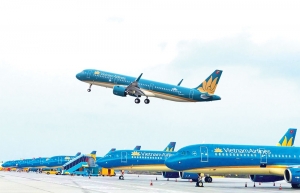 | Aviation pressured to turn into regional freight centre Vietnam has the potential to become a new logistics centre for the continent alongside Singapore, Bangkok, and Kuala Lumpur, if sectors such as aviation are utilised suitably. |
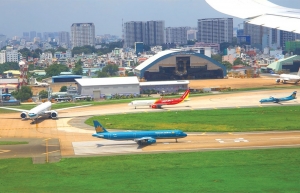 | Contrasting complexions representing aviation arena After two years of battling the repercussions of closed borders, 2023 may be characterised as extra time in a hectic and gruelling football match for several Vietnamese airlines. |
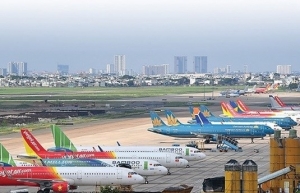 | Vietnamese aviation market predicted to fully recover by year-end The Vietnamese aviation market is forecast to fully recover by the end of this year, according to a global outlook for the aviation industry released by the International Air Transport Association (IATA) recently. |
What the stars mean:
★ Poor ★ ★ Promising ★★★ Good ★★★★ Very good ★★★★★ Exceptional
Related Contents
Latest News
More News
- Businesses ramp up production as year-end orders surge (December 30, 2025 | 10:05)
- Vietjet chairwoman awarded Labour Hero title (December 29, 2025 | 13:06)
- How to unlock ESG value through green innovation (December 29, 2025 | 10:03)
- AI reshapes media and advertising industry (December 29, 2025 | 08:33)
- FPT and GELEX sign deal to develop blockchain tech for global markets (December 29, 2025 | 08:29)
- Vietnam’s GDP forecast to grow by 9 per cent in 2026 (December 29, 2025 | 08:29)
- Women entrepreneurs are key to Vietnam’s economic growth (December 29, 2025 | 08:00)
- Vietnam's top 500 value-creating enterprises announced (December 27, 2025 | 08:00)
- The PAN Group shaping a better future with ESG strategy (December 26, 2025 | 09:00)
- Masan Consumer officially lists on HSX, marking the next phase of value creation (December 25, 2025 | 13:20)

 Tag:
Tag:


















 Mobile Version
Mobile Version